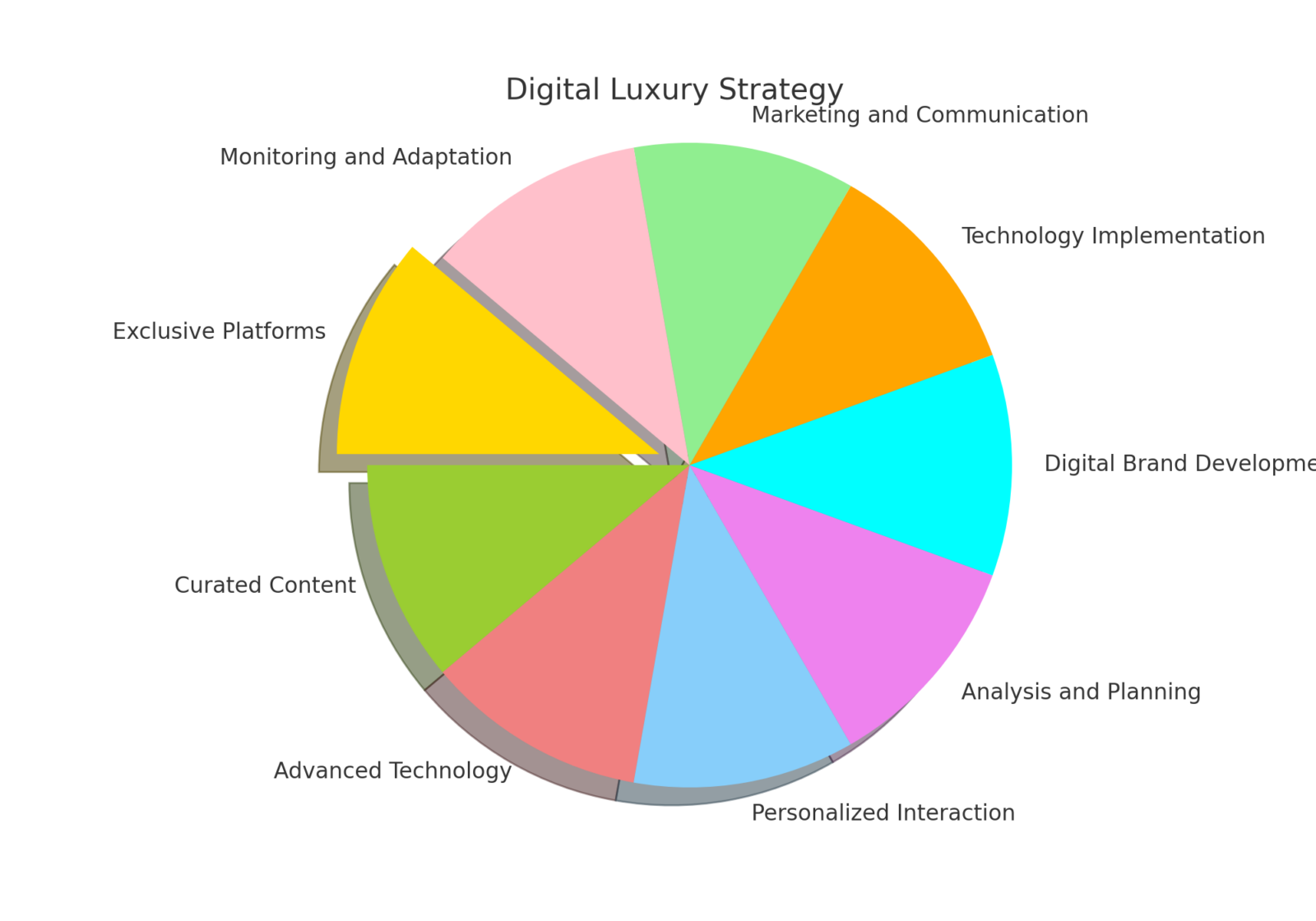Study: How to Design a Brand’s Digital Luxury Strategy Without Losing Exclusivity

Managing Director at LUXONOMY™ Group Middle East
Introduction
The luxury market has historically been exclusive, with a strong emphasis on quality, scarcity, and customer experience. However, digitalization has transformed how luxury brands interact with their customers. This study explores how to design an effective digital luxury strategy without compromising the exclusivity that defines these brands.
Study Objectives
- Understand the challenges of digitalization for luxury brands.
- Identify best practices to maintain exclusivity in the digital realm.
- Provide a strategic framework for luxury brands transitioning to digital.
Methodology
This study is based on a thorough review of existing literature, interviews with luxury marketing experts, and analysis of successful cases of luxury brands that have implemented effective digital strategies.
Challenges of Digitalization for Luxury Brands
Loss of Exclusivity
- Accessibility of digital: The ubiquitous nature of digital platforms can make a luxury brand seem more accessible and less exclusive.
- Overexposure: The risk of overexposure can trivialize the brand’s perception, causing it to lose its aura of exclusivity and rarity.
- Dilution of the luxury experience: Digital experiences may not replicate the sense of exclusivity achieved in carefully designed physical environments.
Brand Image Control
- Consistency across multiple platforms: Maintaining a consistent brand image across various digital platforms can be challenging.
- Real-time interaction: Managing real-time customer interactions requires careful planning and can be challenging to maintain a luxury tone and image.
- Feedback and reviews: Negative feedback and reviews can spread quickly in the digital environment, affecting the brand’s perception.
Customer Experience
- Replicating the luxury experience: Creating a luxury experience equivalent to the physical experience in a digital environment requires innovation and creativity.
- Personalization: The expectation of personalization and customer service is high in the luxury market, and this must be effectively translated into digital platforms.
- Interactivity: Brands must find ways to interact with their customers that are meaningful and exclusive.
Best Practices to Maintain Exclusivity
Exclusive Platforms
- Memberships and invitations: Implementing membership or invitation systems for access to exclusive content and products can maintain a level of exclusivity. Example: private online clubs or exclusive apps.
- Exclusive digital events: Hosting online events only for members, such as product launches or virtual fashion shows.
Curated Content
- High quality and aesthetics: Creating visually impressive and well-curated content that reflects the brand’s values. This can include high-production videos, artistic photography, and well-crafted narratives.
- Select collaborations: Partnering with influencers, celebrities, and artists who align with the brand’s luxury and exclusivity image.
Advanced Technology
- Augmented reality (AR) and virtual reality (VR): Utilizing AR and VR to offer immersive experiences that replicate or even enhance the physical experience. For example, virtual fitting rooms or guided tours of flagship stores.
- Artificial intelligence (AI): Employing AI to personalize the user experience, from product recommendations to customer service.
Personalized Interaction
- High-quality customer service: Offering personalized and exclusive customer service through digital channels, such as advanced chatbots and real-time personal assistance.
- Data and analytics: Utilizing data to better understand customer preferences and behaviors, allowing for precise and effective personalization.
Strategic Framework for a Digital Luxury Strategy
Analysis and Planning
- Market analysis: Conducting a thorough market analysis, including competitor studies and consumer trends.
- Objective definition: Setting clear and measurable objectives for the digital strategy, aligned with the brand’s vision and mission.
Digital Brand Development
- Online presence: Creating an online presence that reflects the brand’s exclusivity and values, with a luxury website and coherent social media platforms.
- Design and functionality: Developing a website with exceptional design and intuitive functionality that offers a high-quality user experience.
Technology Implementation
- Technology integration: Implementing advanced technologies that enhance the customer experience without compromising exclusivity.
- Security and privacy: Ensuring customer security and privacy are well protected, which is crucial for maintaining trust and exclusivity.
Marketing and Communication
- Digital marketing strategies: Utilizing strategies that maintain exclusivity, such as invitation-only campaigns, exclusive content, and limited promotions.
- Consistent communication: Maintaining constant and coherent communication with customers through various digital channels, ensuring the brand message aligns with its luxury image.
Monitoring and Adaptation
- Performance monitoring: Constantly evaluating the performance of the digital strategy through metrics and analysis.
- Continuous adaptation: Adjusting and adapting tactics based on customer feedback and data collected to continuously improve the strategy.
Designing a digital luxury strategy without losing exclusivity requires a careful balance between accessibility and exclusivity. Luxury brands must leverage advanced technology and best digital marketing practices to create unique and personalized experiences that reflect their values and maintain their market position.
Recommendations
- Invest in Technology: Brands should invest in advanced technologies that enhance the customer experience and maintain exclusivity.
- Focus on Personalization: Personalize every interaction with the customer to maintain a sense of exclusivity.
- Maintain Brand Consistency: Ensure all digital touchpoints reflect the brand’s values and luxury image.
This framework provides a guide for luxury brands to navigate the digital world without losing their essence of exclusivity.
Share/Compártelo
- Click to share on LinkedIn (Opens in new window) LinkedIn
- Click to share on WhatsApp (Opens in new window) WhatsApp
- Click to share on Facebook (Opens in new window) Facebook
- Click to share on X (Opens in new window) X
- Click to share on Threads (Opens in new window) Threads
- Click to email a link to a friend (Opens in new window) Email
- Click to print (Opens in new window) Print
- More
Related
Discover more from LUXONOMY
Subscribe to get the latest posts sent to your email.




















